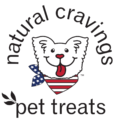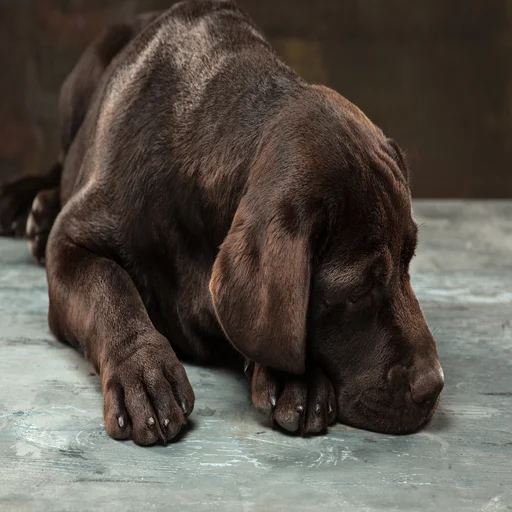An impacted anal gland can be very uncomfortable for your dog. But sometimes it’s even more of a hassle to go to your vet or make an appointment with your groomer. You can express a dog’s anal glands at home. However, you should learn from a professional first. Otherwise, you could end up harming your pup.
This guide is a walkthrough of the process, but this shouldn’t replace a pet professional. Furthermore, sometimes impacted glands can be ruptured or cause other medical emergencies.
Signs that Your Dog’s Anal Glands Need Expression
Signs that a dog’s anal glands need expressing can vary from subtle to more apparent indications. As a responsible pet owner, it’s essential to be attentive to your dog’s behavior and look for the following signs. Also, note that most dogs will naturally express their glands during bowel movements.
Furthermore, many of these symptoms may be something else such as internal parasites or other complications. Make sure to check with your vet first to make sure that anal glads are in fact the problem.
Scooting: One of the most common signs that a dog’s anal glands are full or uncomfortable is when they start dragging their rear end along the ground. However, your dog may also have worms.
Excessive Licking: If your dog is persistently licking or biting their anal area, it could be a sign of discomfort caused by full anal glands.
Foul Odor: An unpleasant smell around your dog’s rear end might indicate that the anal glands are full and need to be expressed. Normal fecal matter will smell bad, but if the smell is excessive, you may need to express their glands.
Difficulty Defecating: Dogs with impacted anal glands may experience difficulty during bowel movements. They may strain or have a hard time passing stools. This is when you should take your dog to the vet rather than try it yourself.
Swelling or Redness: In some cases, you may notice swelling or redness around the anus. Indicating potential inflammation due to unexpressed anal glands.
Pain or Discomfort: Dogs with full or infected anal glands may exhibit signs of discomfort, such as whining, restlessness, or reluctance to sit down. However, this is another instance where you would be better off going to the vet. If don’t wrong the infection can spread to your dog’s bloodstream and cause sepsis.
It’s important to note that not all dogs show obvious signs of anal gland problems. However, if you notice any of the above signs or suspect that your dog is experiencing anal gland issues, it’s best to consult with your veterinarian for a proper evaluation. And, if necessary, express the anal glands safely and correctly.
Preparing for Anal Gland Expression
Expressing your dog’s anal glands can be a delicate process. It’s essential to have the right items to do it safely and hygienically. Here’s a list of items you’ll need.
- Disposable Gloves
- Paper towels
- Petroleum jelly
- Towel to put under your dog
- Bowl of warm soapy water
- Washcloth
- Dog treats
- Trash bag
- Muzzle (optional)
You can also get specialised treats that help with anal gland health.
Step-by-Step Guide to Expressing Dog’s Anal Glands
Expressing a dog’s anal glands should be done with care and precision to avoid any discomfort or injury to your pet. If you’re unsure about the process or uncomfortable doing it yourself, it’s always best to seek guidance from a veterinarian or a professional groomer. However, if you’re confident in handling the task, here are the steps to follow.
Preparation
Wash your hands thoroughly and put on disposable gloves. Gather all the necessary items before you get started.
Positioning the Dog
Place small dogs on a stable surface, like a grooming table. Larger dogs will have to stand on the floor.
Cleaning the Area
Use the warm, damp cloth to gently clean the dog’s rear end. Ensure the area is free from any fecal matter or debris.
Locating the Anal Glands
The anal glands are located on either side of the dog’s anus at the 4 and 8 o’clock positions. Gently lift the dog’s tail to get a better view of the anal area. You should be able to feel them, the anal glands will feel puffy to the touch.
Expression (External Method)
Alright, now comes the messy part. Grab a paper towel in one hand and position it behind your dog’s rear end. This will protect you from any icky fluid. Gently squeeze the anal glands together using your thumb and index finger. You’ll notice a not-so-pleasant, smelly, brown fluid will come out.
Expression (Internal Method – Only if Trained)
Internal expression should only be done by a trained veterinarian or professional groomer.
Cleanup
Throw all used paper towels into the trash bag. You’ll want to use a clean damp washcloth to wipe your dog’s rear. Long-haired dogs might need a little more cleaning.
Finally, throw away the disposable gloves and move on to the final step.
Reward and Comfort
Offer your dog treats and praise. Play a game, do something fun, and make sure to end the process on the best note you can. Otherwise, it will become harder to do yourself next time.
Monitor for Complications
Over the news few days you’ll want to keep an eye on your dog for any signs of discomfort or complications. If you notice any issues, contact your veterinarian promptly.
Remember, if you’re not confident in performing anal gland expression yourself, it’s best to leave the task to a professional who can do it safely.
Conclusion
So there you have it, folks! Expressing a dog’s anal glands might not be the most glamorous task, but it’s an essential part of keeping our furry pals happy and healthy. Remember, if you’re not comfortable doing it yourself, don’t hesitate to reach out to a professional groomer or your vet.

